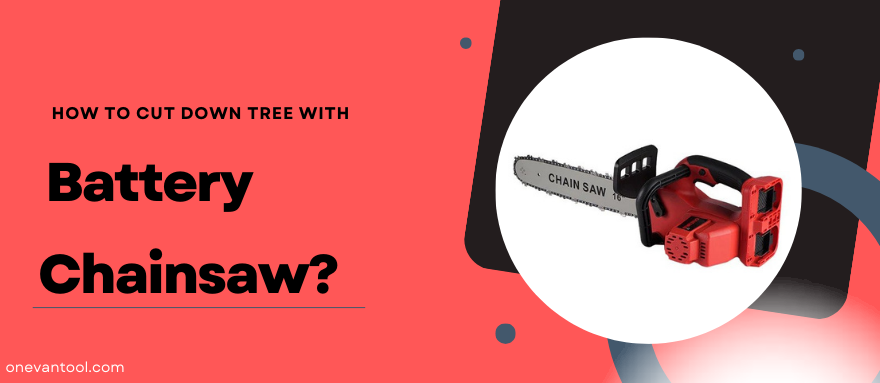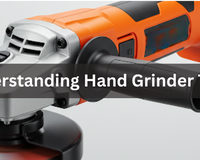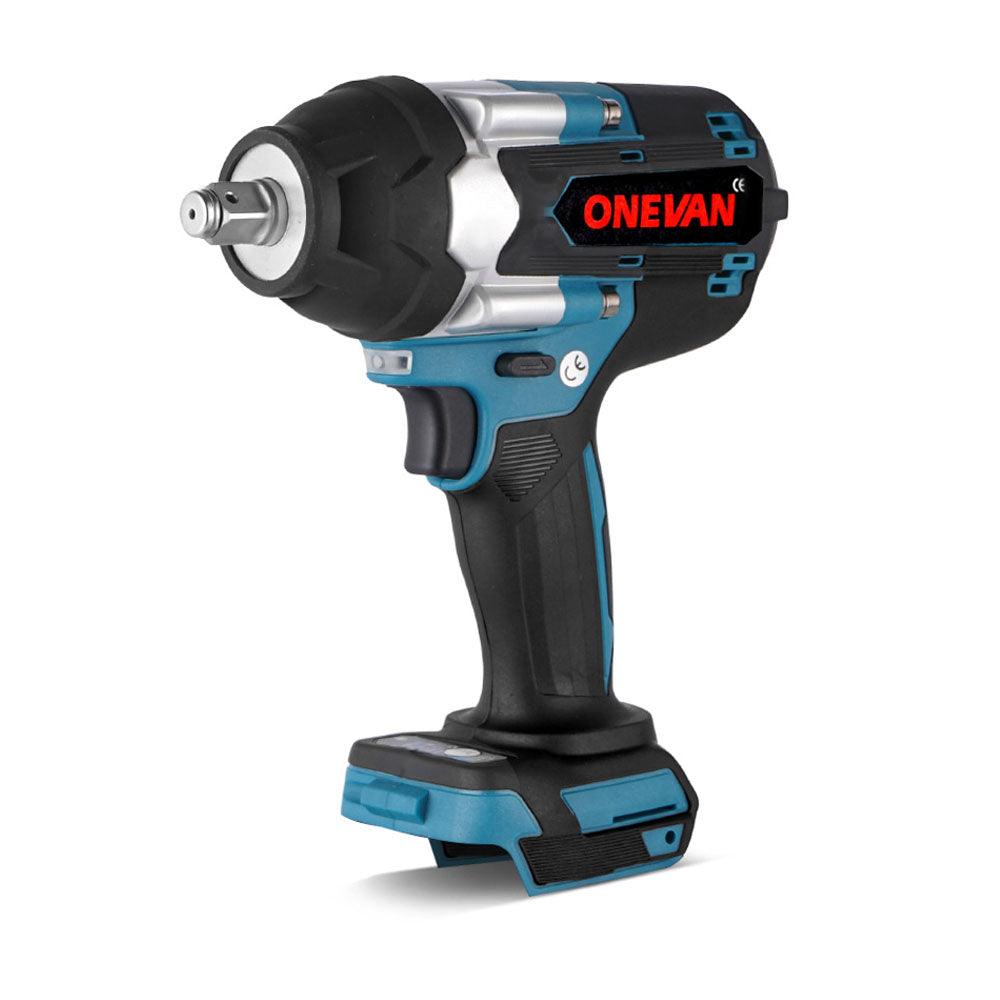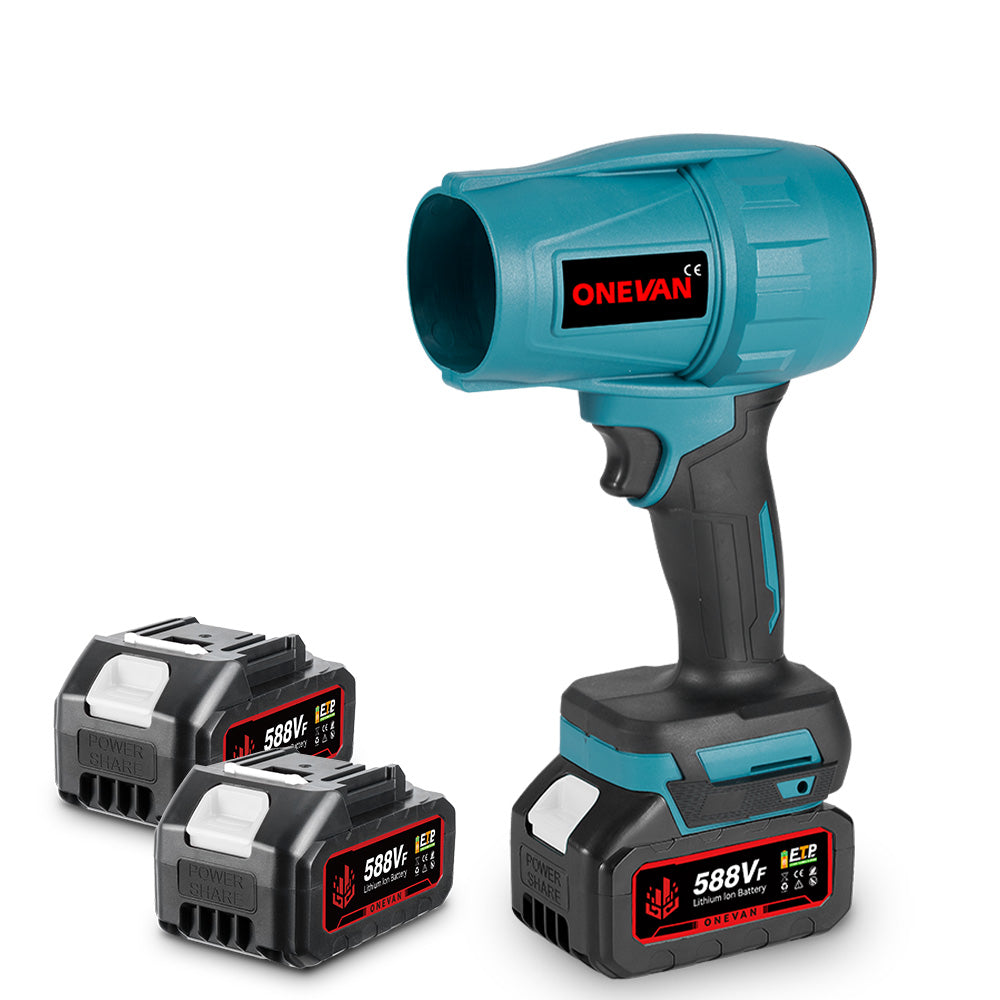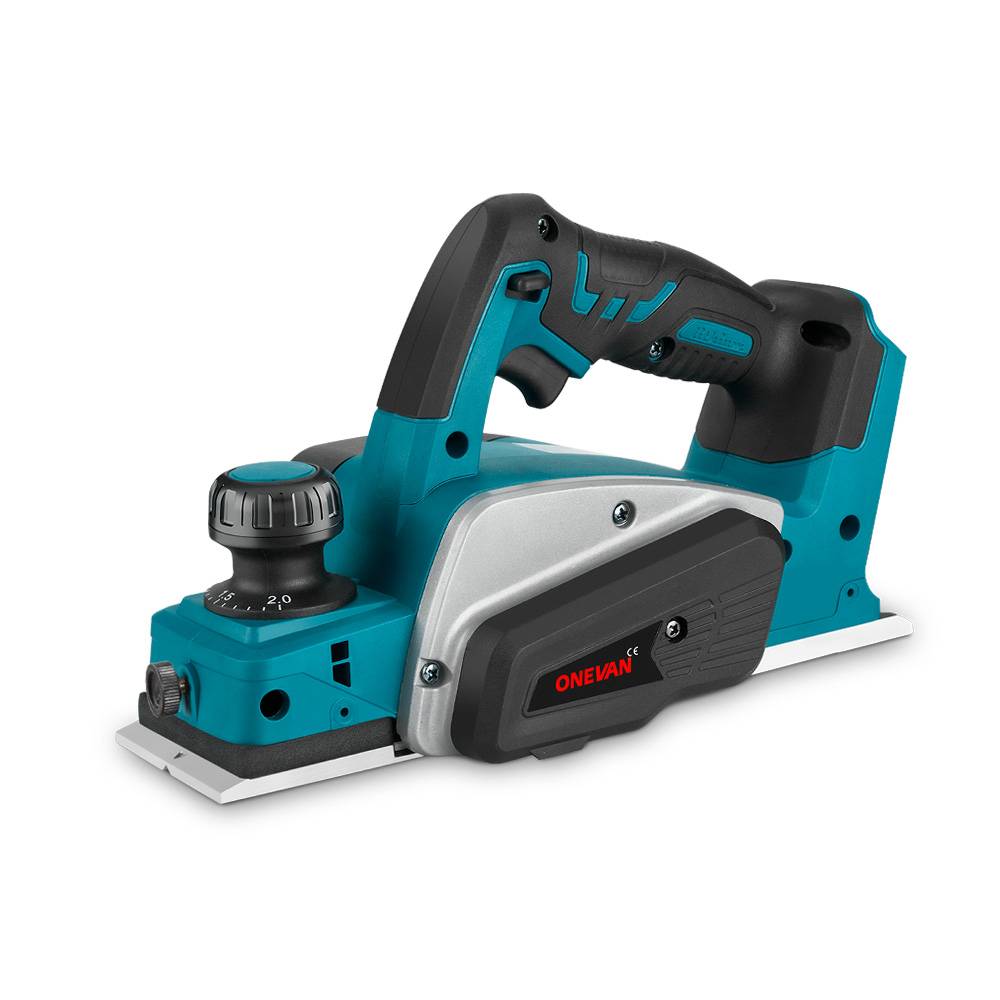Have you ever looked at a tough tree and thought, "I can take that down myself!"? Is this your first time attempting to cut down a tree? If so, this guide is for you. We'll equip you with the knowledge and steps to cut tree with a battery chainsaw. Cutting a tree is difficult and frustrating job, but with the proper knowledge and equipment, you can achieve it safely and without damaging anything.
We'll cover choosing what good is a battery chainsaw, safety planning, planning strategic cuts, advancing chainsaw techniques, and maintaining this power tool.
1. Preparing to Cut Down a Treewith a Battery Chainsaw
Effective tree removal with a battery chainsaw requires meticulous preparation. We have covered some crucial steps to ensure your safety make tree cutting flawless:
How to Choose Battery Chainsaw?
Choosing the right chainsaw hinges on the tree's diameter:
- Smaller Trees (Up to 10" Diameter): A chainsaw with a moderate power output and a shorter bar length (14-16 inches) is good.
- Larger Trees (12"+ Diameter): Choose a more powerful chainsaw with a longer bar (18-20 inches) for deeper cuts.
Tip: Contact a qualified chainsaw professional at your local hardware store for personalized recommendations.
Recommended Battery Chainsaw to Cut The Tree:
ONEVAN 16" Cordless Chainsaw
ONEVAN 16" Cordless Chainsaw is a powerful (7980W) and cordless chainsaw features a long-lasting 16-inch blade, easy handling, and Makita battery compatibility for convenient outdoor cutting. You can easily cut cutting small trees (up to 10-12 inches in diameter) and tackling tough branches.
ONEVAN 16" Cordless Chainsaw Specifications
|
Feature |
Specification |
|
Maximum Output Power |
7980W |
|
Brushless Motor Speed |
0-30000 RPM |
|
Cutting Diameter |
80cm (approx. 31.5 inches) |
|
Blade Length |
16 inches |
|
Chain Speed |
20m/s |
|
Battery Compatibility |
Makita batteries (not included) |
|
Power Source |
Cordless |
Essential Personal Protective Equipment (PPE)
Safety is very important during cutting trees:
- Wear safety glasses: Glasses will protect you from debris and dust
- Ear Protection: Ear protection equipment is important to protect your hearing.
- Wear Helmet: Helmet is crucial to protect your head from sudden fall of branches.
- Cut-Resistant Gloves: These gloves help you to protect your hands from accidental cuts.
- Chaps: These are heavy-duty leg coverings. Chaps are essential for chainsaw cut protection.
- Long Pants and Long-Sleeved Shirt: Minimize exposed skin to reduce scratches and abrasions.
Remember: PPE is non-negotiable. It's your cover throughout the tree removal process.
Comprehensive Tool and Supply Checklist
In addition to your chainsaw and PPE, gather these essential tools and supplies:
- First-Aid Kit: Be prepared for any minor injuries.
- Wedges: Metal wedges help control the fall direction of the tree.
- Filing Tools: Maintain optimal cutting performance by keeping your chainsaw chain sharp.
- Extra Battery: Ensure you have enough power to complete the job.
- Marking Paint: Mark the planned cutting lines on the tree.
- Tape Measure: Measure the tree diameter to plan your cuts effectively.
2. Planning Your Cut with a Battery Chainsaw

Analyzing the Felling Zone
The felling zone is the entire area impacted by the falling tree. A thorough analysis of this zone is crucial to identify and solve potential hazards. Here's what you need to scrutinize:
Assessing Surrounding Area and Obstacles: Carefully examine the area around the tree. Are there buildings, power lines, fences, or other structures the falling tree could damage? Mark these obstacles clearly and factor them into your cutting plan to avoid unintended consequences. An essential safety step is to look for underground utilities. It's imperative to contact your local utility companies for locating any buried lines before you begin the cutting process.Wind Direction and Its Impact: Wind can significantly influence the fall direction of a tree. The wind speed and direction always should be observed. In situations where there is wind, it may be wiser to postpone cutting down big trees. If a hefty gust of air should come, the tree could possibly be blown off its course resulting in accident or even destruction.
Determining the Direction of the Fall
Now that you understand the felling zone, it's time to determine the ideal fall direction. This decision hinges on several factors:
- Lean of the Tree: Keep an eye on how the tree naturally leans. If it has an obvious lean, it is usually safest to cut it down in that direction. Importantly, if there's a risk of the tree leaning towards houses or endangering lives, it's essential to adjust your plan accordingly and consult with specialists if necessary.
- Branch Distribution: Analyze the distribution of major branches. A heavier concentration on one side can influence the fall direction. Factor this into your plan to ensure a controlled fall.
Techniques to Control Fall Direction
Once you've identified the desired fall direction, here are some techniques to achieve it:
- Hinge Cut: This refers to the notch cut on the felling side of the tree. The depth and angle of the hinge cut directly influence the fall direction. A deeper and angled hinge cut will encourage the tree to fall in the desired direction.
- Back Cut: Cutting back trees with battery powered chainsaws are made on the opposite side of the tree from the hinge cut. The placement and depth of the back cut determine the remaining wood holding the tree upright. A proper back cut, made level with the bottom of the hinge cut, allows the tree to fall in the planned direction once the hinge wood is severed.
- Wedges: Metal wedges can be helpful for fine-tuning the fall direction. These wedges are driven into the back cut to gently push the tree in the desired direction as the hinge wood is severed.
Creating a Cutting Plan
With the felling zone analyzed, fall direction determined, and control techniques identified, it's time to craft a cutting plan. This plan should be a clear, concise roadmap for the entire felling process. Here's what to include:
- Marked Fall Direction: Clearly mark the intended fall direction on the tree with paint.
- Escape Route: Plan a safe escape route at a 45-degree angle away from the fall direction. Clear any obstacles along this route to ensure a swift exit if necessary.
- Cutting Sequence: Outline the sequence of cuts – hinge cut, back cut, and felling cut – ensuring proper depth and placement for each.
Mapping the Cut
Take a moment to visualize your cutting plan. Imagine yourself making each cut and how the tree will respond. This mental rehearsal can help you identify any potential issues and refine your plan before raising your chainsaw.
Emergency Exit Strategies
Remember, safety is paramount. Always make sure you have rehearsed and know an unambiguous way out. If, at any point during felling, you feel uncertain or uneasy, it's crucial to stop immediately and reassess the situation. Do not mind getting help from a trained person if necessary.
3. Start Cutting Down Trees with Battery Chainsaw
Alright, we've planned meticulously, analyzed the risks, and now it's time for the next move. Remember; do not underestimate the safety throughout this process. Let’s read these things in detail:
Step 1: First Cut
Grab your chainsaw, fire it up, and adjust your stance for stability. We'll begin with the notch cut, a critical V-shaped cut made on the felling side of the tree. The depth of this cut should be roughly one-fifth of the tree's diameter. The angle of the cut, typically 45 degrees towards the desired fall direction, is equally important. A proper notch cut sets the stage for the tree to fall where you want it.Step 2: The Back Cut
Now, move to the opposite side of the tree for the back cut. This horizontal cut severs the main body of the wood, allowing the tree to hinge on the remaining wood left by the notch cut.The key here is precision. The back cut should be level with the bottom of the notch cut, creating a flat plane for the hinge. Do not cut all the way through the tree. Leave a small hinge (around 2-3 inches) to control the fall.Step 3: Use Wedges on Trees
Wedges are metal wedges used for minor adjustments to the fall direction. If the tree leans slightly away from your desired direction, carefully tap a wedge into the back cut to nudge it gently towards the target zone. Use wedges sparingly and with caution – overdoing it can cause the tree to split uncontrollably.Step 4: The felling cut
Once the back cut is complete and wedges are in place, it's time for the final part– the felling cut. Carefully resume cutting through the remaining hinge on the notch side. The tree should begin to tip in the predetermined direction.Step 5: Observe and Move Away Quickly
As the tree starts to fall, immediately stop sawing and move away quickly along your designated escape route. Maintain eye contact with the falling tree and be prepared to adjust your path if necessary.Remember: Never stand directly behind the falling tree or in the line of its fall.
4. How to Use a Battery Chainsaw Limbing a Tree?

After successfully felling the tree, the next crucial step is limbing it like a professional. Here's how: Keep reading to grasp the basic steps to limb a tree with a battery chainsaw.
Step 1: Size Up the Situation
Before diving in, take a moment to assess the fallen tree. Identify any hazards like branches under tension, which can snap unpredictably. Look out for broken or damaged sections that might require extra caution.Step 2: Clear a Work Area
Establish a safe work area around the fallen tree. Clear your area of any object that could hinder your progress. Having an uncluttered workspace reduces the accident chances.Step 3: Prepare Your Chainsaw
Ensure your chainsaw is properly charged and the chain is sharp. A dull chain increases cutting effort and the risk of losing control. Double-check your PPE – safety glasses, gloves, and chaps are essential for limbing.Step 4: Strategize Your Cuts
Start with the larger limbs first. Start your cut from the bottom of the branch such that it is about one third way from the trunk. And then finish by sawing through the top side so that you meet the first cut in the middle. By using this two-cut method, you will avoid having branches pinch your chainsaw when cutting.Step 5: Maintain Control and Body Position
When limbing, prioritize control and proper body position. Use a firm grip on the chainsaw handles and maintain a stable stance. Avoid overextending yourself or cutting above shoulder height. Let the chainsaw do the work – don't force cuts.Step 6: Bucking Up the Branches
Once the larger limbs are removed, you may choose to buck them up into smaller, more manageable pieces. For bucking, follow the same cutting technique as for limbs, ensuring proper control and positioning.5. How to Use a Battery Chainsaw Bucking a Tree?
Step 1: Assess and Plan Your Cuts
Before diving in, analyze the branches you'll be bucking. Look for any knots, bends, or irregularities that might require adjustments to your cutting strategy. Plan your cutting sequence to maximize efficiency, minimizing unnecessary movement and wasted time.Step 2: Secure the Branch for Stability
For safe and controlled bucking, it's crucial to secure the branch. Ideally, find a level and stable surface to rest the branch on. If necessary, use wedges or other supports to elevate sections for easier cutting. A secure branch minimizes the risk of the chainsaw binding or twisting during the cut.Step 3: Utilize the Proven Cutting Technique
Remember the two-cut approach we used for limbing? It applies here as well. To start, make the cut on the bottom side of the branch. Make it about a third of the length starting from its tip. After that, saw through the upper surface to meet with the initial incision at its midpoint. This prevents the branch from pinching your chainsaw.Step 4: Maintain Control Throughout the Cut
As with limbing, prioritize control. Use a firm grip on the chainsaw handles and maintain a balanced stance. Let the chainsaw do the work – don't force the cut. If the branch binds or twists, stop sawing and reposition it for a clean cut.Step 5: Bucking to Desired Lengths
Work your way down the branch, making successive cuts to achieve your desired log lengths. Remember, it's always better to cut a bit longer than needed. You can always make a final trimming cut later, but a short piece is unusable scrap.Step 6: Watch Out for Kickback
Always be aware of the chainsaw's kickback zone. Never cut near the tip of the bar, as this is the most common cause of kickback accidents. Maintain a safe distance between yourself and the cutting area.Step 7: Sharpen Up for Next Time
After a successful bucking session, take a moment to inspect your chainsaw chain. A dull chain increases cutting effort and the risk of accidents. Sharpen your chain before storing your chainsaw to ensure it's ready for the next battle.6. Maintenance Tips for Battery Chainsaw After Cutting Down Trees
Cleaning:
After each use, thoroughly remove debris from the chainsaw bar and chain. Use a wet towel to wipe off any dirt, ensuring the tool is clean for its next use.
Lubrication:
Appropriate lubrication will improve chainsaw performance. Make sure that your chainsaw has its automatic oiling system functioning properly. As stated by the manufacturer, apply bar oil manually if needed.
Sharpening:
A dull chain is both dangerous and diminishes cutting performance. You should learn how you can sharpen your own chainsaw chain. For this purpose, you can read out our blog. Also Read: How To Sharpen A Cordless Chainsaw Chain?
Battery Care:
To ensure maximum battery life, follow the charging instructions given by the manufacturer. Do not store battery in extreme temperatures. It is recommended to keep it partly charged at about 50% when unused for long periods of time.
Do a thorough safety check before every use. Check if the chain tension is alright, if there are no free parts and if the chain brake functions correctly?
7. Conclusion
Battery-operated chainsaws are very efficient and easy to use. However, before cutting trees, it is very important to follow all safety guidelines set by your cordless chainsaw manufacturer. Once you plan adequately, it will be significantly easily to cut down long trees.
8. FAQ
1. Can a battery chainsaw fell huge trees?
Battery chainsaws have seen significant advancements in power and efficiency. Modern battery-operated saws can handle trees with diameters of up to 18-20 inches when used properly and with sufficient power. However, for larger trees, a gas-powered chainsaw would be better.
2. How long does the battery last while cutting down a tree?
Several factors determine how long the batteries will last when using a chainsaw: type of saw, capacity of the battery and how hard it is being used for cutting. It is common for about 30 to 60 minutes of cutting time for light or medium use. But where big trees are concerned that need heavy cuts, you will drain your battery faster than normal. You may also consider getting an extra battery pack for longer work.
3. What are some typical accidents related to chain saws?
Kickback occurs when the chain slides backward into its handler’s vicinity; this usually comes as an outcome of hitting the tip of the bar.
Cuts occur due to accidental contact with the sharp teeth on the moving chain during operation. Always put on cut-proof gloves particularly during such emergencies.
Eye injuries are caused by debris flying into one’s eyes especially after contact with any chainsaw component or lumber pieces that break off from work materials. Make sure you have goggles or safety glasses on while working.
4. How do you notch a notch before felling a tree?
A notch cut is made at an angle in shape of “V” on the side where falling is desired (felling side) near its bottom side. One fifth diameter depth should be created and pushed at an angle of about forty-five degrees towards where it want/ go downwards. This ensures that it falls accurately so as not hit anything else within its surroundings
5. What is an easy way to cut down a tree?
When it comes to removing a tree, no way has ever been easy at all as it requires proper planning, the use of correct equipment and safe cutting techniques that make it more manageable and productive.
6. What size chainsaw do I need to cut down a tree?
The size of the chainsaw is determined by the diameter of the tree. A smaller chainsaw with low power (14-16 inches) works for trees with trunk diameters up to 10 inches whereas a broader cut capacity in stronger (18-20 inch) which will go deeper is required for trees of 12 inches or higher.

